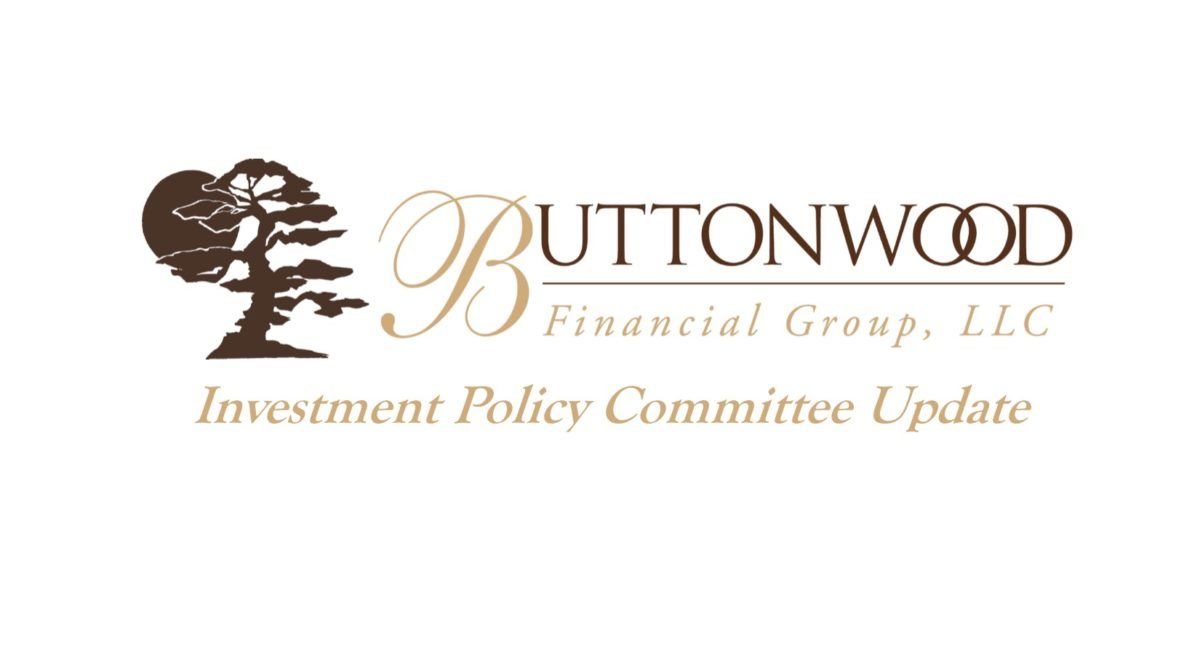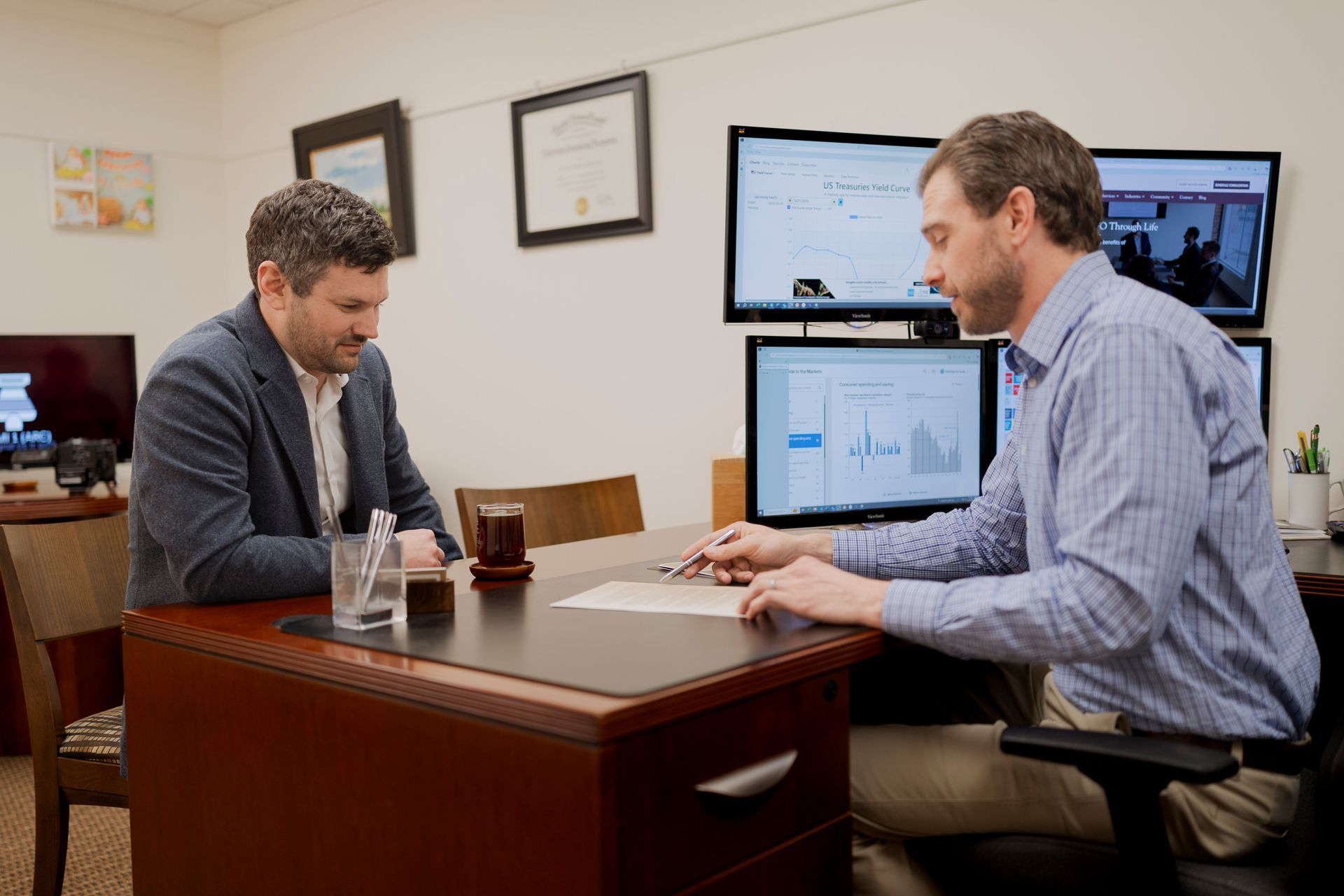Buttonwood Investment Policy Committee Update – April 2019
It’s often said the stock market has a way of “climbing the wall of worry,” and as we enter the second quarter of 2019 this phrase is timely. After a steep decline in Q4 2018, the major stock indices have continued to rally and are now within the grasp of new all-time highs.
We wanted to take this opportunity to look at both some of the positives that can keep the market heading higher, as well as some of the negatives that could slow or end this recent rally.
Making the argument for higher stock prices, we believe one of the largest influences on stocks has been the reversal of Fed policy. In summary the Fed has moved from a “rising rate” environment last year, to what seems to be even more than an “on-hold” stance this year. Currently many market participants are expecting the next move to be a decline in interest rates.
The idea of lower rates is proving to be a positive for the housing market as lower rates have led to a dramatic increase in mortgage applications and homebuilding activity. And for those worried about higher interest rates, the statistical case is also being made that the Fed can continue to increase rates an additional 2% with no real concern as nominal GDP as increased at an annualized rate of 4.9% in the past two years while the federal funds rate is only 2.375%.
Other positives we continue to see focus on a trade deal with China, the dollar being reasonably strong and relatively stable, gold prices remaining relatively flat, VIX volatility index at the lower end of the range, foreign stock markets rallying along with ours, regulatory burdens declining, consumer confidence high and tax burdens have been cut, especially for businesses. Add these items to the idea that many believe the data in the coming months are set to improve, along with employment, wages, housing and inflation and there is reason for optimism.
While we are always happy to see rising stock prices, we are again becoming concerned that gains have exceeded the fundamentals we look for when investing. In at least near-term, we believe the bigger picture negatives out weight the positives.
Back to interest rates: Recent headlines have focused on the yield curve (from 3-months to 10-years) inversion that took place Friday March 22. ( https://fred.stlouisfed.org/series/T10Y3M ) An inversion means interest rates on the 3-month US Treasury bill were higher than rates on the 10-year US Government bond. An inverted yield curve itself does not cause a recession, but it does have a good track record of preceding recessions. In fact, before each of the last 6 recessions the yield curve inverted. As a rule, we look for a 1-year / 10-year inversion of at least ¼ of 1% that is in place for several weeks as providing additional strength to this indicator. And so far, we haven’t seen this happen.
Beyond rates, while a possible trade agreement with China is lifting the markets, uncertainty is starting to surface about the next round of tariffs, possibly focused on Europe. Add in Brexit drama, major European nations on the edge of recession, a rising dollar and several additional headline risk items and the markets may have some near-term challenges ahead.
Other challenges, out on the horizon, include ballooning Government and Corporate debt. Too much debt isn’t good, we know this, however we don’t care, until we do. The problem with debt is that over time, debt stops stimulating growth because of the added cost of interest and the re-payment of the debt. Early on, debt-fuel increases growth as it simply pulls forward future spending that wouldn’t have happened without the debt. As such, debt tends to increase asset prices. During the last Fed led “stimulus,” the Fed lowered interest rates and increased its balance sheet from $870B to $4.5T and risk assets (stocks, real estate, etc) performed very well. ( https://www.federalreserve.gov/monetarypolicy/bst_recenttrends.htm )
If financing costs rise and there is a lack of cash, generally asset prices fall. In 2007-2009 it was Consumer (mortgage) debt that caused the problem. However, today we see Government spending growing faster than GDP (currently projected to reach around 21% of GDP in 2019) thus continuing to increase our national debt (currently over $21 Trillion). To keep perspective, we tend to watch the ratio of Government debt to GDP which remains over 100%. ( https://fred.stlouisfed.org/series/GFDEGDQ188S )
Debt of corporations is also an escalating concern. The ratio of Corporate debt to GDP is at 45% – a level seen last in 2009 and prior to that in 2002. And the quality (safety) of corporate debt is declining. In 2009 about 32% of Corporate debt was rated BBB (the bottom of investment grade). Today almost 50% of corporations carry a BBB rating (a record high). Adding another level of concern is the large amount of corporate bonds that will mature in the next few years. More than $1T of lower rated corporate debt and $1.8T of investment grade debt will mature and need to be refinanced between 2020 and 2022. When this bell tolls, not only will market participants need to have a “risk on” appetite, rates will need to be at a level where companies can afford the interest payments. ( https://www.grantspub.com/files/presentations/David%20Rosenberg%20Spring%202018.pdf )
Then we come back to what ultimately drives stock prices: Earnings. In great part because of the tax law change, 2018 was characterized by very strong Earnings growth (the E in P/E), but a weak stock market (the P in P/E) because of the concerns about higher interest rates (which often leads to P/E ratio decrease). This year, earnings expectations have steadily deteriorated; but thanks to the Fed and the idea of lower interest rates, P/E multiples have expanded.
If the economy does well and inflation increases, we believe the Fed will have to go back to the position of increasing interest rates. This is likely to lead to additional volatility (which, if investments are positioned correctly, can also mean opportunity!) Because of the interplay between interest rates and stock prices we believe there is a limit to continued P/E expansion, thus earnings growth will likely have to exceed the lowered expectations bar for the market to generate significantly more upside.
So far, consensus estimates for Q1 S&P 500 earnings are in slightly negative territory; with only 3% growth or so expected for Q2 and Q3. This suggests the risk of an “earnings recession” is elevated. Even if an earnings recession occurs outside of an economic recession, an earnings recession can be challenging. The most recent example was mid-2015 to mid-2016 which saw five straight quarters of earnings declines, and two 10 percent corrections.
To specifically address these opposing positive and negatives, we have elected to take the more conservative route as it aligns with our long-term investment objective of achieving a more consistent rate of return over full economic cycles. (When economic risk is elevated, we reduce investment risk.)
As such, we have increased the credit quality (ratings) of the bonds we hold, we have shifted our equity overweight from growth to value for both our US and foreign investments and we have increased cash holdings (where we currently receiving 2%+ rate of return without risk to principal). As new assets come in for investment, we continue to opportunistically invest.
Remaining consistent with the core focus for the Buttonwood Investment Policy Committee (IPC) and positioning of assets for the various stages of economic cycles: We believe the US and major global economies will continue to grow in the months to come, however growth is slowing. As such we will continue to proactively seek opportunities while remaining focused on downside protection.
If you would like to learn more about the Buttonwood Investment Policy, contact us today ! Click HERE to schedule an initial conversation.
Recent Buttonwood Articles
Are you ready to explore the benefits of your very own Family CFO?







